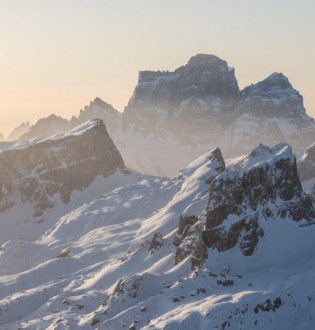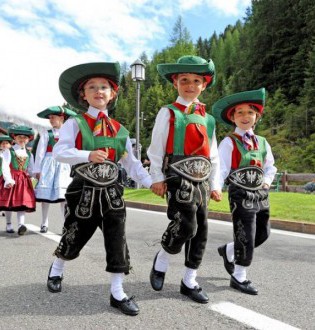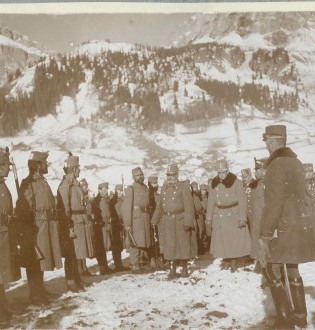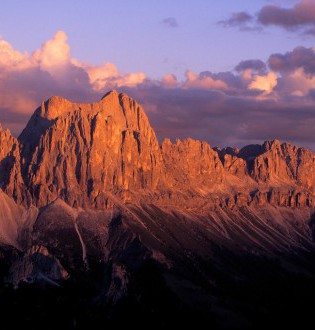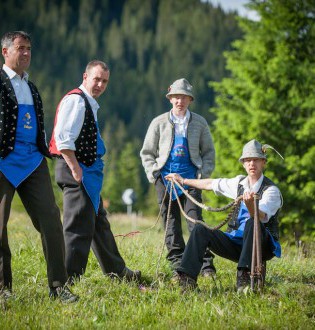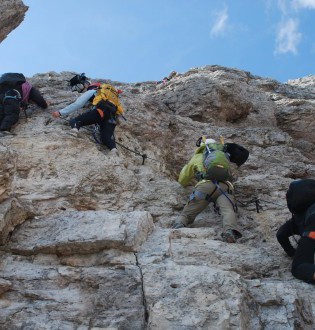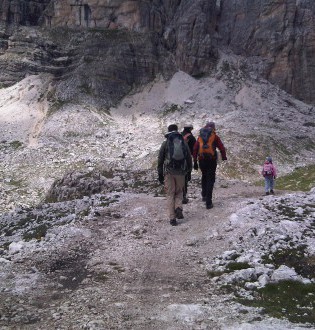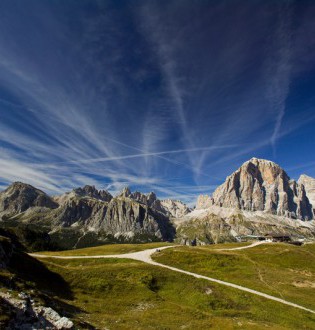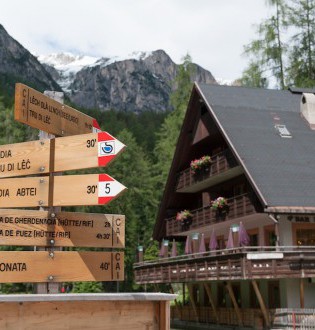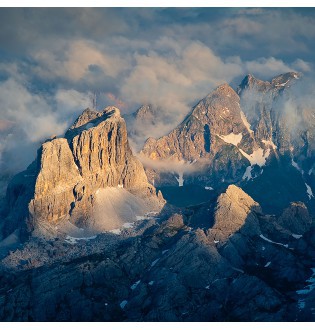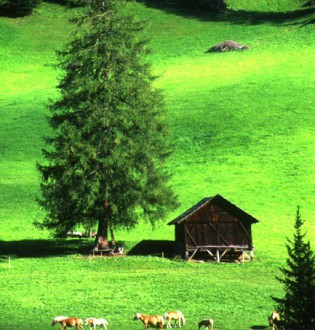Regarded as among the most attractive mountain landscapes in the world, the Dolomite Mountains are a recently recognized UNESCO World Heritage Site inaugurated in 2009. Comprising over 90,000 acres of mountainous terrain, these mountains offer unusual contrasts in landscapes. Trails climb and wend their way around towering rock, offering unimaginable vistas that surprise with every step.
The Dolomites are not only known for their vast hiking trails and ski resorts, they are also home to some famous personalities recognized worldwide for their excellent work
The Dolomites are filled with traditions dating back centuries, come and discover its rich culture
When visiting the Dolomites keep your eyes peeled for wildlife - whether it's summer or winter, you are bound to spot something extraordinary
The battle of the Dolomites may not be the most well-known battle of WWI, but it was a battle of man-against-man and valued the heroic actions of individuals.
The Dolomites feature year-round beauty. So when is the best time to visit the Dolomites you ask? That depends entirely on you!
If you’ve ever been to, or even just looked at pictures of the magnificent Dolomite Mountains in Italy, you know there are plenty of reasons to visit.
While you are hiking down the trail, you may hear “Salve!” (a formal Italian Hello), “Guten Tag!” (Hello in German), or “Bun dé!” (Good Day in Ladin). You may also hear the occasional “Hi” or “Hello” from other like-minded English-speaking travelers, smart enough to hike in or travel to the Dolomite Mountains!
Whether you’re returning from a long hike, finishing up a day of biking the trails or just relaxing after a day of taking in the breathtaking sights of the Dolomite mountains, there’s no doubt you’ve worked up a thirst.
Traveling to the Dolomites can at first seem overwhelming, given the size and expanse of the area, so it’s a good idea to prepare a list of things to do ahead of time so you get the most out of your trip. Here are five experiences in particular that should not be missed.
Another excellent way to sample the tastes of the Dolomites is to visit one of the many rifugios located throughout the region. These mountain huts offer shelter and many different amenities to travelers, including world-class cuisine. Some even feature top chefs from Michelin-starred restaurants who create gourmet dishes using traditional ingredients of the region
Storm season in the Dolomites region tends to be most prevalent during the summer, typically from June through September, during which time any given month may see between 6 and 10 days where stormy weather is a problem
A mountain guide is a professional climber that has achieved certification by the International Federation of Mountain Guides Associations (IFMGA), which is the highest qualification in the world for mountaineers.
The region is also home to a fascinating population of people and a rich, unique culture that has existed there for centuries. It is from this distinct culture that several products have originated which are just about as unique as the people who produce them.
Whether it’s because the dishes are prepared with the freshest of local ingredients, that their recipes have been passed down through generations, or that they’re prepared by top rated gourmet chefs, one thing’s for certain: consuming a meal in the Dolomites isn’t just eating; it’s experiencing the very culture of the area.
Located just south of the main section of the Alps, the Italian Dolomites are somewhat of a tourist Mecca, offering breathtaking views, peaceful pastures and a step back in history to a time much simpler.
If you’re lucky enough to be planning a trip to the Italian Dolomites then you’re in for an amazing treat. Breathtaking views, serene pastures and ancient villages will provide you an experience you’ll never forget and the endless activities available in the area will leave you with stories to tell for years to come.
The Dolomite Mountains are one of very few places where the Ladin culture still exists. This ancient culture, with roots dating as far back as the Roman Empire, it is steeped in history. The Ladin people have their own language, traditions, legends, and even their own cuisine.
The Dolomites offer some of the best weather in all of the Alps – perfect for year-round active adventures. The summer offers warm temperatures and plenty of sun – perfect for hiking, climbing, via ferrata, and cycling trips. Ample snowfall begins to accumulate in December, and the sun shines an unparalleled eight days out of ten in the Dolomite Mountains – more than any other range in the Alps! – making skiing, snowboarding, and snowshoeing adventures here unbeatable.
Over the centuries, there have been many stories and fairy tales shared among those inhabiting the Dolomites, sometimes changing and evolving but always routed in the beautiful land and mountainous terrain surrounding them. The stories paint intriguing pictures and attempt to describe everyday life in an exciting, romantic and extraordinary way. Some are meant to teach lessons or instill good values, but all are meant to entertain and captivate the listener.
